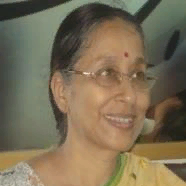International Journal of Information Technology and Computer Science (IJITCS)
IJITCS Vol. 5, No. 9, 8 Aug. 2013
Cover page and Table of Contents: PDF (size: 603KB)
A Face Recognition Approach Based on Entropy Estimate of the Nonlinear DCT Features in the Logarithm Domain Together with Kernel Entropy Component Analysis
Full Text (PDF, 603KB), PP.31-42
Views: 0 Downloads: 0
Author(s)
Index Terms
Feature Selection, Discrete Cosine Transformation, Entropy Measure, Entropy Component Analysis, Renyi Entropy Face Recognition, Arc Cosine Kernel
Abstract
This paper exploits the feature extraction capabilities of the discrete cosine transform (DCT) together with an illumination normalization approach in the logarithm domain that increase its robustness to variations in facial geometry and illumination. Secondly in the same domain the entropy measures are applied on the DCT coefficients so that maximum entropy preserving pixels can be extracted as the feature vector. Thus the informative features of a face can be extracted in a low dimensional space. Finally, the kernel entropy component analysis (KECA) with an extension of arc cosine kernels is applied on the extracted DCT coefficients that contribute most to the entropy estimate to obtain only those real kernel ECA eigenvectors that are associated with eigenvalues having high positive entropy contribution. The resulting system was successfully tested on real image sequences and is robust to significant partial occlusion and illumination changes, validated with the experiments on the FERET, AR, FRAV2D and ORL face databases. Experimental comparison is demonstrated to prove the superiority of the proposed approach in respect to recognition accuracy. Using specificity and sensitivity we find that the best is achieved when Renyi entropy is applied on the DCT coefficients. Extensive experimental comparison is demonstrated to prove the superiority of the proposed approach in respect to recognition accuracy. Moreover, the proposed approach is very simple, computationally fast and can be implemented in any real-time face recognition system.
Cite This Paper
Arindam Kar, Debotosh Bhattacharjee, Dipak Kumar Basu, Mita Nasipuri, Mahantapas Kundu, "A Face Recognition Approach Based on Entropy Estimate of the Nonlinear DCT Features in the Logarithm Domain Together with Kernel Entropy Component Analysis", International Journal of Information Technology and Computer Science(IJITCS), vol.5, no.9, pp.31-42, 2013. DOI:10.5815/ijitcs.2013.09.03
Reference
[1]P. Belhumeur, J. Hespanha, and D. Kriegman, “Eigenfaces vs. Fisherfaces: Recognition using class Specific linear projection,” IEEE Trans. on PAMI, vol.19, no.7, 1997.
[2]H. Yu and J. Yang, “A direct LDA algorithm for high dimensional data with application to face recognition”.Pattern Recognition, 34(10), 2001, pp. 2067-2070.
[3]P. Comon, “Independent component analysis, a new concept?” Signal Proc., vol. 36, pp. 287–314, 1994.
[4]Hyvärinen, A. and Oja, E. (1997). A fast fixed point algorithm for independent component analysis. Computation, 9(7):1483–1492.
[5]D. Gabor, “Theory of communication,” J. IEE, vol. 93, pp. 429-459, 1946.
[6]Zhang Yan-Kun and Liu Chong-Qin, “A Novel Face Recognition Method Based on Linear Discriminant Analysis”. J. Infrared Millim. Wav. 22(5), 2003, pp. 327-330.
[7]X. Zou, J. Kittler and K. Messer, “Illumination Invariant Face Recognition: A Survey”, in: Proceedings of 1st IEEE International Conference on Biometric: Theory, Application and Systems (2007), pp. 1–8.
[8]C. E. Shannon. The mathematical theory of communication. Bell System Technical Journal, pages 379 –423, 623–653, July and October 1948.
[9]A. Renyi. Some fundamental questions of information theory. Turan [13] (Originally: MTA III. Oszt. Kozl., 10, 1960, pp. 251-282), pages 526– 552, 1960.
[10]Robert Jenssen “Kernel entropy component analysis” IEEE transactions on pattern analysis and machine intellegence vol. 32, no. 5, May 2010.
[11]http://en.wikipedia.org/wiki/Mahalanobis_distance.
[12]Hyung-Soo Lee and Daijin Kim, “Illumination-Robust Face Recognition Using Tensor-Based Active Appearance Model” 8th International Conference on Automatic Face & Gesture Recognition, 2008. FG '08.
[13]K. Etemad and R. Chellappa, “Discriminant analysis for recognition of human face images”, Journal of the Optical Society of America A, Vol. 14, No. 8, pp. 1724-1733, 1997.
[14]Z. M. Hafed and M. D. Levine, “Face Recognition using the Discrete Cosine Transform”. International Journal of Computer Vision, 43(3), 2001, pp. 167~188.
[15]A. S. Georghiades, D.J. Kriegman, and P. N. Belhumeur, “Illumination cones for recognition under variable lighting: Faces,” in Proceedings of IEEE Conference on Computer Vision and Pattern Recognition, 1998, pp. 52–58.
[16]Z. H. Sun, G. Bebis, and R. Miller, “Object detection using feature subset selection,” Pattern Recognition, vol. 37, pp. 2165–2176, 2004.
[17]Huan Liu, Edward R. Dougherty, Feature-Selection Overfitting with Small-Sample Classifier Design, IEEE Intell. Sys. Nov-Dec 2005.
[18]A. Nobuhide and T. Masaru. Information theoretic learning with maximizing Tsallis entropy. In Proceedings of International Technical Conference on Circuits/System, Computers and Communications, ITC-CSCC, pg. 810–813, Phuket, Thailand, 2002.
[19]C. E. Shannon. The mathematical theory of com- munication. Bell System Technical Journal, pages 379 –423, 623–653, July and October 1948.
[20]A. Renyi, “On Measures of Entropy and Information,” Selected Papers of Alfred Renyi, vol. 2, pp. 565-580, Akademiai Kiado, 1976.
[21]http://mathworld.wolfram.com/RenyiEntropy.html.
[22]Robert Jenssen “kernel entropy component analysis” IEEE transactions on pattern analysis and machine intellegence vol. 32, no. 5, May 2010.
[23]M. Turk and A. Pentland, “Eigenfaces for recognition,” Journal of Cognitive Neurosicence, vol. 3, no. 1, pp. 71-86, Mar. 1991.
[24]Wayo Puyati, Walairacht, A. “Efficiency Improvement for Unconstrained Face Recognition by Weightening Probability Values of Modular PCA and Wavelet PCA” in the 10th Int. Conference on Advanced Communication Technology, 2008. ICACT 2008.
[25]M.H. Yang, N. Ahuja, and D. Kriegman, “Face Recognition Using Kernel Eigenfaces,” Proc. IEEE Int’l Conf. Image Processing, Sept. 2000.
[26]Jian Yang; Zhang, D.; Jing-Yu Yang “Constructing PCA Baseline Algorithms to Reevaluate ICA-Based Face-Recognition Performance”, in IEEE Trans. on Systems, Man, and Cybernetics, Part B, Vol. 37, Issue4, 2007.
[27]Xudong Xie; Kin-Man Lam “Gabor-based kernel PCA with doubly nonlinear mapping for face recognition with a single face image”, IEEE Transactions on Image Processing, Vol. 15 , Issue: 9 ,2006.
[28]Chengjun Liu “Gabor-based kernel PCA with fractional power polynomial models for face recognition” in IEEE Transactions on Pattern Analysis and Machine Intelligence, Vol. 26 , Issue: 5 ,2004.
[29]Youngmin Cho, Lawrence K. Saul, “Analysis and Extension of Arc-Cosine Kernels for Large Margin Classification,” Neural Computation, 22(10):2678–2697, (2010).
[30]http://reference.wolfram.com/mathematica/guide/DistanceAndSimilarityMeasures.html.
[31]The Face recognition technology (FERET) face database, http://www.itl.nist.gov/iad/humanid/feret.
[32]A.M. Martinez and R. Benavente, “The AR Face Database,” CVC Technical Report #24, June 1998.
[33]Face Recognition and Artificial Vision group FRAV2D face database http://www.frav.es/.
[34]Olivetti & Oracle Research Laboratory, The Olivetti & Oracle Research Laboratory Our Database of Faces, http://www.cam-orl.co.uk/facedatabase.html.
[35]J. Yang, D. Zhang, A.F. Frangi, and J. Yang, “Two-Dimensional PCA: A New Approach to Appearance-Based Face Representation and Recognition,” IEEE Trans. Pattern Analysis and Machine Intelligence, vol. 26, no. 1, pp. 131-137, Jan. 2004.
[36]M.H. Yang, “Kernel Eignefaces vs. Kernel Fisherfaces: Face Recognition Using Kernel Methods,” Proc. Fifth IEEE Int’l Conf. Automatic Face and Gesture Recognition, pp. 215-220, May 2002.
[37]P.C. Yuen and J.H. Lai, “Face Representation Using Independent Component Analysis,” Pattern Recognition, vol. 35, no. 6, pp. 1247-1257, 2002.
[38]X. Jiang, B. Mandal, and A. Kot, “Eigenfeature Regularization and Extraction in Face Recognition,” IEEE Trans. Pattern Analysis and Machine Intelligence, vol. 30, no. 3, pp. 383-394, Mar. 2008.
[39]A.M. Martinez, “Recognizing Imprecisely Localized, Partially Occluded, and Expression Variant Faces from a Single Sample per Class,” IEEE Trans. Pattern Analysis and Machine Intelligence, vol. 24, no. 6, pp. 748-763, June 2002.
[40]B.G. Park, K.M. Lee, and S.U. Lee, “Face Recognition Using Face- ARG Matching,” IEEE Trans. Pattern Analysis and Machine Intelligence, vol. 27, no. 12, pp. 1982-1988, Dec. 2005.
[41]H. Cevikalp, M. Neamtu, M. Wilkes, and A. Barkana, “Discriminative Common Vectors for Face Recognition,” IEEE Trans. Pattern Analysis and Machine Intelligence, vol. 27, no. 1, pp. 4-13, Jan. 2005.
[42]Imran Naseem,Roberto Togneri, Mohammed Bennamoun, “Linear Regression for Face Recognition”, IEEE Transaction on Pattern Analysis and Machine Intelligence, Vol. 32, no. 11, November 2010.
[43]Y. Gao, M.K.H.Leung, “Face recognition using line edge map,” IEEE Transactions on Pattern Analysis and Machine Intelligence, vol. 24, no. 6, pp. 764-779, 2002.
[44]J. Song, B. Chen, and Z. Chi, X. Qiu, and W. Wang, “Face recognition based on binary template matching,” In Proceedings of the Third International Conference on Intelligent Computing (ICIC2007), Springer Publishers, Berlin/ Heidelberg, pp. 1131-1139, August, 2007.
[45]J. Lu, K.N. Plataniotis, A.N. Venetsanopoulos, and S.Z. Li, “Ensemble- Based Discriminant Learning with Boosting for Face Recognition,” IEEE Trans. Neural Networks, vol. 17, no. 1, pp. 166-178, Jan. 2006.
[46]J. Phillips, H. Wechsler, J. S. Huang, and P. J. Rauss, The FERET database and evaluation procedure for face recognition algorithms. Image and Vision Computing, 16(5):295-306, 1998.
[47]P.J. Phillips, H. Moon, S. A. Rizvi, and P. J. Rauss, “The FERET evaluation methodology for face-recognition algorithms,” IEEE Trans. Pattern Anal. Mach. Intell., vol. 22, no. 10, pp. 1090–1104, Oct. 2000.
[48]Ngoc-Son Vu, Alice Caplier, “Efficient Statistical Face Recognition across pose using Local Binary Patterns and Gabor wavelets,” IEEE 3rd International Conference on Biometrics: Theory, Applications, and Systems, 2009. BTAS '09. .
[49]Lui, Y.M. and Beveridge, J.R. “Grassmann registration manifolds for face recognition”. In “Proceedings of the European Conference on Computer Vision”, pages 44–57 (2008).
[50]Zhang, W., Shan, S., Gao, W., Chen, X. and Zhang, H. “Local gabor binary pattern histogram sequence (lgbphs): A novel non-statistical model for face representation and recognition”. In “Proceedings of the IEEE International Conference on Computer Vision”, (2005).




